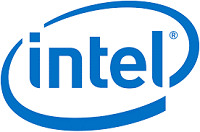 New Intel CEO Pat Gelsinger’s vow earlier this year to move the company into the foundry business – making chips not just for itself but also for others – may take the form of acquiring GlobalFoundries in a deal that could be worth $30 billion, according to a story in the Wall Street Journal.
New Intel CEO Pat Gelsinger’s vow earlier this year to move the company into the foundry business – making chips not just for itself but also for others – may take the form of acquiring GlobalFoundries in a deal that could be worth $30 billion, according to a story in the Wall Street Journal.
The Journal reported that “talks don’t appear to include GlobalFoundries executives, as a spokeswoman for the company said it isn’t in discussions with Intel,” adding that “It isn’t guaranteed one will come together, and GlobalFoundries could proceed with a planned initial public offering.”
The potential acquisition, which would be the largest in Intel’s history, would put Intel in a stronger position vis a vis foundry market leader Taiwan Semiconductor Manufacturing Co. (TSMC) and enable Intel to deliver chips amid a global shortfall in chip supplies.
The GlobalFoundries development is one among many moves by Intel on the foundry front. Earlier this week reports emerged from Europe that Intel may be on the verge of committing $20 billion to two European semiconductor manufacturing plants, and “up to $100bn over several decades,” but also “is seeking generous subsidies and support from European governments to help the projects to fruition,” according to the trade publication Data Center Dynamics. Meanwhile, Intel is reportedly investing $20 billion in fabs in Arizona while TSMC is building an Arizona fab of its own and is expected to begin equipment move-in at its new 5nm factory in Arizona as soon as the middle of next year, according to industry sources.
 These events take place against a backdrop of Intel’s intensifying competition with chip maker AMD (actually, AMD is a “fabless chip maker” — its chips are manufactured by TSMC, GlobalFoundries and others), which is growing its market share in HPC-class and data center server processors. The latest Top500 list of the world’s most powerful supercomputers showed that AMD chips were used in more of the new entries on the list than Intel chips. In part this is due to AMD’s consistency in rolling out new EPYC CPUs, including the 7003 Series 7nm product launch in March. Meanwhile, Intel recently disclosed that the next model of its Xeon Scalable CPU, code-named Sapphire Rapids, would be delayed until the first quarter of next year (an Intel spokesperson told us the delay will not impact installation of Intel’s Aurora exascale supercomputer at Argonne National Laboratory, a system in which Sapphire Rapids and Intel “Ponte Vacchio” GPUs [which also has been delayed] will be utilized).
These events take place against a backdrop of Intel’s intensifying competition with chip maker AMD (actually, AMD is a “fabless chip maker” — its chips are manufactured by TSMC, GlobalFoundries and others), which is growing its market share in HPC-class and data center server processors. The latest Top500 list of the world’s most powerful supercomputers showed that AMD chips were used in more of the new entries on the list than Intel chips. In part this is due to AMD’s consistency in rolling out new EPYC CPUs, including the 7003 Series 7nm product launch in March. Meanwhile, Intel recently disclosed that the next model of its Xeon Scalable CPU, code-named Sapphire Rapids, would be delayed until the first quarter of next year (an Intel spokesperson told us the delay will not impact installation of Intel’s Aurora exascale supercomputer at Argonne National Laboratory, a system in which Sapphire Rapids and Intel “Ponte Vacchio” GPUs [which also has been delayed] will be utilized).
Meanwhile, GPU market leader Nvidia is attempting (pending regulatory approval) to acquire Arms Holdings for $40 billion, an acquisition that would give Nvidia a position in the CPU market. And last October, AMD announced a planned acquisition of FPGA maker Xilinx.




